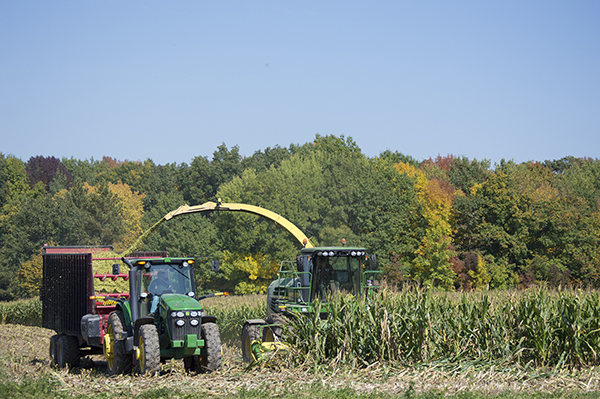
Doing some quick mathematics, Hoffman determined that a 2 percentage unit drop in crude protein from 8.5 to 6.5 percent equates to about $6 worth of protein for each wet ton of corn silage fed (plant protein was valued at 20 cents per pound). This would need to be made up in supplemental feed purchases.
So, are the lower protein concentrations in corn silage an across the board genetic phenomena or are other factors causing lower protein values?
Hoffman first looked at average 2014 crude protein levels from three different forage analysis laboratories. Two Midwestern laboratories averaged 7.4 and 7.3 percent. The third eastern U.S. laboratory averaged 8.2 percent, near book value. Historical records at two of the laboratories did not indicate any significant decrease in crude protein concentrations over time.
In addition to the laboratory analysis, Hoffman also looked at University of Wisconsin corn silage hybrid performance trial data from current and past years. Again, no obvious trend in reduced crude protein percentage was noted.
With no evidence to suggest genetics is at play, Hoffman looked at management factors and reported that both nitrogen fertility and plant density impact the crude protein percentage of corn silage. Given that corn is a grass plant, the nitrogen fertility factor comes as no surprise. The relationship is especially significant at pollination.
There have also been a plethora of studies comparing the impact of plant densities on corn silage yield and quality. In a vast majority of these experiments, as plant density increased, so did yield, but many forage quality parameters (including crude protein) decreased. This is why there is a "sweet spot" where both yield and feed quality are optimized.
In summary, Hoffman found no evidence to suggest that the inherent crude protein concentration of corn silage was declining. Conversely, there are management factors such as plant density and nitrogen fertility that may explain why the protein content of an individual sample is lower than what might be expected.

